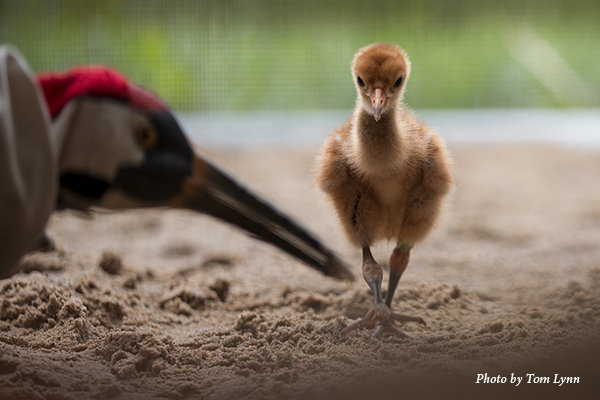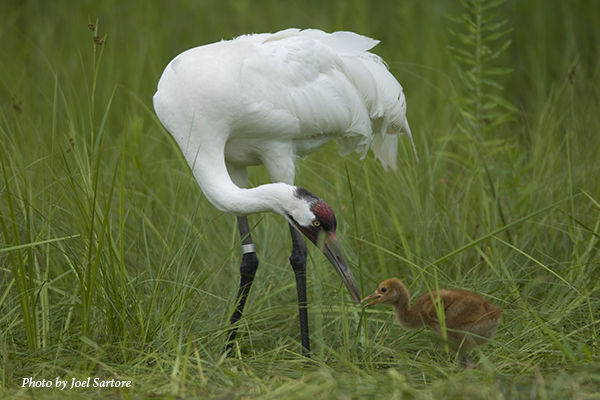
Health management has been at the core of good egg production and successful captive rearing of endangered Whooping Cranes at the International Crane Foundation since the early 1990s. Across the Whooping Crane recovery program, however, there is a renewed emphasis on improving and fine-tuning our approaches in order to achieve more lasting success with the reintroduction of this species. No reintroduced population is as yet self-sustaining. Specifically, the International Whooping Crane Recovery Team and the newly created Whooping Crane Species Survival Plan is in the midst of reorganizing the uses of the captive flock and emphasizing the production of more parent-reared cranes for release. The idea is to “build a better bird” from several vantage points, such as behavior and health.
Concerns over use of formulated diet, development of the immune system, and long-term behavioral consequences of a captive upbringing have led us to question the role of the gut microbiome in the Whooping Crane chicks we raise for release.

Studies of Red-crowned Cranes in China have shown that artificial rearing alters the diversity of the gut microbiome in chicks (Xie, Y. et al. Sci. Rep. 6, 33350; doi: 10.1038/srep33350, 2016). Altered microbial diversity during development can have lifelong impacts on host immunity and other aspects of health. These effects may be ameliorated through microbial transfers between adults and chicks.
This year we started working with Dr. Kevin Kohl of the University of Pittsburgh to test if fecal transplants from healthy Whooping Crane parents into artificially reared chicks (aka costume- or hand-reared chicks) will alter their gut microbial diversity and improve health outcomes.
Research from the past two years has shown several bacterial genera that differ in abundance and proportion between parent- and artificially reared Whooping Cranes. The sampled droppings of the artificially reared chicks lacked the genus Fusobacterium, which has been implicated in the development of systemic immunity in numerous animal systems. Additionally, these chicks exhibited higher proportions of opportunistic pathogens in swabs of their upper respiratory system.
With Dr. Kohl’s collaborative partnership, we hope to begin to shed light on this aspect of artificially reared Whooping Cranes. We predict this project will have a significant impact on crane health and well-being and serve as a model for approaching these issues in other endangered bird reintroduction programs.
 Story submitted by Dr. Barry Hartup, Director of Conservation Medicine for the International Crane Foundation. Click here to learn more about the work at our Global Headquarters.
Story submitted by Dr. Barry Hartup, Director of Conservation Medicine for the International Crane Foundation. Click here to learn more about the work at our Global Headquarters.
